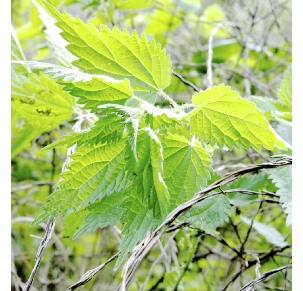 INTRODUCTION INTRODUCTION
FIBRE CATEGORY: CELLULOSE FIBRE
Bast fibres are a group of natural cellulose fibres characterised by their fineness, strength and flexibility and they offer great potential as sustainable alternatives to the dominance of cotton.
Bast fibres are also known as ‘soft’ fibres or skin fibres, distinguishing them from the coarser and less flexible fibres of the leaf, or “hard,” fibre group. They are obtained from the inner bark (or skin) of a plant. The fibres support the conductive cells of the phloem and provide strength to the stem. Most of the important bast fibres are obtained from cultivated plants, for instance Linen (flax), hemp or ramie, but recently bast fibres from wild plants such as stinging nettles are being revisited as a raw material for textiles. Banana bast fibre is also beginning to be developed for use as clothing textiles, but is at present a waste product of banana cultivation, and not extensively utilised.
 Bast fibres generally thrive well in very varied climates, but for top quality fibres the environment should be moist but mild. The plants do not require extensive irrigation and can flourish without chemical intervention. Bast fibres generally thrive well in very varied climates, but for top quality fibres the environment should be moist but mild. The plants do not require extensive irrigation and can flourish without chemical intervention.
The production of linen commonly uses some agricultural chemicals and limited application of fertilizers and herbicides to control weeds, but the environmental impacts associated with water consumption, pollution and build-up of salts in soil are generally avoided. Organic linen refers to linen that is made from plant fibres where the plants have been grown without the use of toxic pesticides and fertilizers. Bast fibres like linen, hemp, jute and kenaf can grow well on land unsuitable for food production and may even assist the recultivation of soils previously polluted with contaminants such as heavy metals.
Since the valuable fibres are located inside the phloem of the plant, they must be separated from the woody xylem material. All bast fibres follow similar processing methods before the fibres can be spun and then woven or knitted into fabric. The selection of optimum quality flax or bast fibre has traditionally been done by hand, which makes the process costly, but this does offer environmental benefits. Nowadays, there are plenty of products on the market made of “organic linen” or “eco-friendly linen”. While some of these products may be made from flax fibers, many of them are made from other linen-like bast fibres. then woven or knitted into fabric. The selection of optimum quality flax or bast fibre has traditionally been done by hand, which makes the process costly, but this does offer environmental benefits. Nowadays, there are plenty of products on the market made of “organic linen” or “eco-friendly linen”. While some of these products may be made from flax fibers, many of them are made from other linen-like bast fibres.
|





